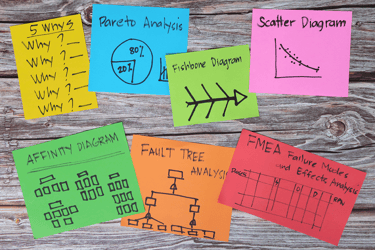The Packaging Industry's Sustainability Challenge: Why ERP Systems Are Essential for Success A straightforward guide to navigating sustainability regulations across folding carton, flexible...
Top Packaging Sustainability Trends Shaping 2025
As the world continues to evolve, so does our approach to sustainability.
Packaging, a critical component in various industries, is undergoing a significant transformation. In 2024, companies and consumers are focusing on reducing environmental impact, driving innovation, and promoting sustainability.
Let’s take a look at the top packaging sustainability trends.
Contents
- Rise of recyclable and compostable materials
- Enhanced reusability through design
- Increased transparency and eco-labeling
- Adoption of minimalist packaging
- Integration of technology for smart packaging
- Circular economy models
- Biodegradable inks and adhesives
- Consumer education and engagement
- Conclusion
Rise of recyclable and compostable materials
Recyclable materials are no longer just a niche market; they are becoming mainstream. Innovations in materials like plant-based plastics, mushroom packaging, and seaweed-based wraps are gaining traction. These materials reduce reliance on fossil fuels and minimize waste by breaking down naturally or being easily recyclable. As consumers demand more environmentally friendly materials, companies are increasingly adopting these alternatives to meet demand and enhance their environmental credentials.
Enhanced reusability through design
The concept of reuse is gaining momentum. Packaging designs are evolving to support multiple uses and extend the lifecycle of materials. Brands are introducing packaging that can be repurposed as storage containers, home décor, or even as parts of new products. This trend reduces waste and adds value to the packaging, encouraging consumers to keep and reuse it rather than discard it after a single use. According to a survey by Jabil, 37% of packaging decision-makers believe that reusable packaging could be the ultimate solution to sustainable packaging.
Increased transparency and eco-labeling
Transparency is critical to building trust with consumers. Companies are now providing more detailed information about the sustainability of their packaging through eco-labels and certifications. These labels help consumers make informed choices by clearly indicating the environmental impact of the packaging, including details on recyclability, compostability, and the use of renewable resources. 68% of companies questioned in the Jabil survey reported that they had made a public statement about sustainable packaging, with 36% of those statements containing clear commitments to sustainability.
Adoption of minimalist packaging
Minimalism is a growing trend in packaging design. By reducing excess material and focusing on essential components, companies reduce waste and their carbon footprint. This approach helps reduce the environmental impact and aligns with consumer preferences for simplicity and practicality. Brands are adopting minimalist designs to create packaging that is both functional and eco-friendly.
Integration of technology for smart packaging
Smart packaging is revolutionizing the industry by integrating technology such as QR codes and NFC chips to provide consumers with information about the sustainability of their packaging. These technologies enable brands to communicate their environmental efforts more effectively and allow consumers to access details on recycling instructions, material sources, and the overall environmental impact of the packaging.
Circular economy models
The circular economy model is becoming increasingly relevant in packaging sustainability. Companies are exploring ways to close the loop by designing packaging that can be easily recycled or repurposed into new products. This approach reduces waste and conserves resources by continuously reusing packaging materials rather than ending up in landfills.
Biodegradable inks and adhesives
Another trend gaining momentum is the use of biodegradable inks and adhesives. Traditional inks and adhesives can contain harmful chemicals that contribute to environmental pollution. In contrast, biodegradable options break down more easily and have less environmental impact. This innovation is particularly important for compostable or recyclable packaging, ensuring that all components are environmentally friendly.
Consumer education and engagement
Educating consumers about sustainable packaging and encouraging responsible disposal practices is a crucial trend. Brands are investing in campaigns and educational materials to help consumers understand the importance of recycling and composting. By fostering a culture of sustainability, companies can drive positive change and enhance the effectiveness of their packaging initiatives.
Conclusion
The packaging industry is at the forefront of the sustainability movement, and the trends in 2024 highlight a solid commitment to reducing environmental impact and promoting responsible consumption.
From innovative materials and minimalist designs to smart technologies and consumer education, these trends are shaping a more sustainable future for packaging. As businesses and consumers continue to embrace these changes, we move closer to a world where packaging contributes positively to the environment.
Not only is it important to adopt these practices, but brands and consumers alike are asking the supply chain to quantify and document how sustainable the packaging they are producing is. Using traceability technology, carbon scoring, etc., are great ways to measure what impact is being generated with the initiatives above.




